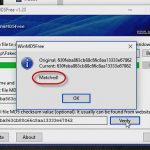How to Retrieve Operating System Information Using a Command Line
How to Retrieve Operating System Information Using a Command Line
There are many command line utilities that you can use to retrieve operating system information along with switches to filter for specific data.
For instructor-led Windows Server training, see our class schedule.
Using VER.EXE.
The first command line utility is the VER.exe command. When using this command you will only retrieve the operation system version. If you are using Windows Vista or later as your desktop OS or Windows Server 2008 or later the command will only display the version number. You will then need to convert the number to determine the OS. See figures below:
Windows 8.1 OS
Windows Server 2012 R2 OS
Using SYSTEMINFO.EXE
Another command you could use is Systeminfo.exe. This utility will give you a wealth of information about your OS. See figures below for examples:
Windows Server 2012 R2 OS
As you can see Syteminfo.exe dumps and enormous amount of data for you operating system. But what if you are looking for a specific piece of data such as name and version. You can pipe the output to Findstr to filter on the desired data. See figure below:
Using WINVER.EXE.
Another command utility that can be used is Winver.exe. See figure below:
Using WMI.
Windows Management Instrumentation can also be queried to retrieve operating system information. See figure below:
The above commands will work on all operating systems running Windows XP and Server 2003 and later.
PowerShell can also be used to retrieve operating system information. But, I will leave that for another discussion. Hope this blog helps you retrieve operating system information.
Until next time, RIDE SAFE!
Rick Trader
Windows Server Instructor – Interface Technical Training
Phoenix, AZ
You May Also Like
A Simple Introduction to Cisco CML2
0 3896 0Mark Jacob, Cisco Instructor, presents an introduction to Cisco Modeling Labs 2.0 or CML2.0, an upgrade to Cisco’s VIRL Personal Edition. Mark demonstrates Terminal Emulator access to console, as well as console access from within the CML2.0 product. Hello, I’m Mark Jacob, a Cisco Instructor and Network Instructor at Interface Technical Training. I’ve been using … Continue reading A Simple Introduction to Cisco CML2
Creating Dynamic DNS in Network Environments
0 642 1This content is from our CompTIA Network + Video Certification Training Course. Start training today! In this video, CompTIA Network + instructor Rick Trader teaches how to create Dynamic DNS zones in Network Environments. Video Transcription: Now that we’ve installed DNS, we’ve created our DNS zones, the next step is now, how do we produce those … Continue reading Creating Dynamic DNS in Network Environments
Cable Testers and How to Use them in Network Environments
0 727 1This content is from our CompTIA Network + Video Certification Training Course. Start training today! In this video, CompTIA Network + instructor Rick Trader demonstrates how to use cable testers in network environments. Let’s look at some tools that we can use to test our different cables in our environment. Cable Testers Properly Wired Connectivity … Continue reading Cable Testers and How to Use them in Network Environments













